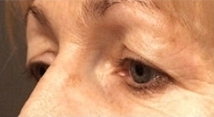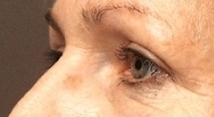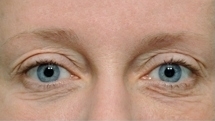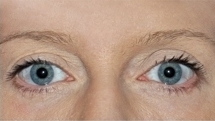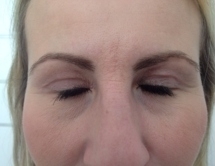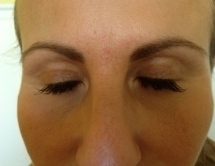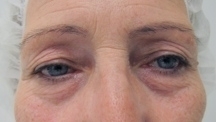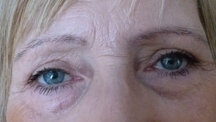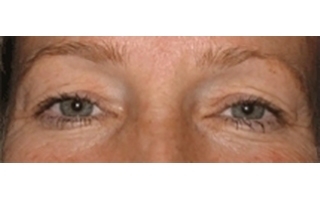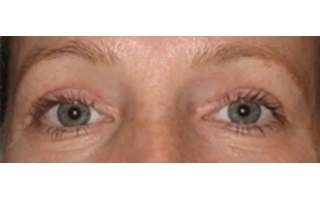Eyelid plastic surgery
Eyelid plastic surgery is performed when the eyelids are lowered or fat bags are formed under the eyes. The procedure clears the vision and at the same time adjusts the older and more tired look.
From our blog:
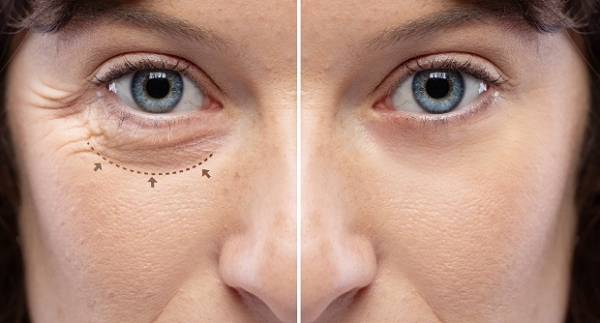
Kdy na plastickou operaci spodních víček
Oči jsou prvním místem vizuálního kontaktu a tedy i prvního dojmu. Oči na nás prozradí...
Read moreWhat are you asking?
Recommendations before eyelid surgery
Before the surgery, it is necessary to consult with a plastic surgeon who will answer whether the surgery is suitable and what result can be expected. In case of taking blood thinners (Warf., Anopyrin, Acylpyrin...) it is necessary to discontinue these drugs one week before the operation. Please consult your general practitioner about the possibility of discontinuation.
Recommendations after eyelid surgery
After surgery the patient's eyes are not covered and vision is not restricted. The patient goes home immediately after the procedure. However, he is not allowed to drive a car. For the first 24 hours, the patient applies cold compresses (ice in a plastic bag, cooling gels) over his/her head and observes a resting regime. It is recommended not to lie horizontally but in a semi-sitting position. If increased sensitivity is present, painkillers can be used (not Acylpyrine and Ibuprofen!).
5th - 7th day after surgery j stitches are removed. After the operation, swelling and bruising occur in the area, which may persist for 2-3 weeks.
10th day after surgery it is necessary to start with scar massage. Apply pressure to the scar with the tip of your finger. Apply pressure for 30 seconds, then move the finger to another place on the scar. Massage the scar several times a day. You can use a greasy cream. Do not pull on the scar to prevent the wound from opening.
It may take several weeks for the swelling to fully subside. Itching, redness, numbness, tearing may occur temporarily. We recommend rest for at least a week after surgery. Sports and physical exertion, after two to three weeks after the procedure itself. Facial cosmetics can be used approximately 14 days after the procedure.
The patient is able to perform office work as early as 3 days after surgery, sports and physical activity is recommended after 2-3 weeks after the eyelid surgery. The scar is red at first after the surgery, but gradually fades, so that it is then almost invisible in the crease on the upper eyelid and under the eyelashes on the lower eyelid. The final result of eyelid surgery is evaluated after 4 - 8 weeks.
After the surgery, the scar should not be exposed to sunlight for two months, otherwise the scar may darken. If it is exposed to the sun sooner, the scar should be covered with a cream with a high UV filter.
What eyelid plastic surgery does not remove
Even if the plastic surgery removes excess skin, the wrinkle fans - the fine facial lines at the outer corners - remain and can be further addressed botulinum toxin or fine hyaluronic acid fillers.
Eyelid surgery is not suitable if your eyes produce few tears or if you suffer from an eye infection, if the skin is too short or if you suffer from lagophthalmos (inability to close the eye slit).
you are a suitable candidate for eyelid surgery
Drop of the upper eyelid over the edge of the pupil (called ptosis)
Most often caused by sagging of the muscle - the eyelid elevator. It occurs along with narrowing of the field of vision and can also cause headaches.
Fat pronouncements
The eyes are placed on fat pads, parts of which are pushed under the skin of the eyelids with age in the form of so-called fatty protrusions, causing the formation of the well-known "bags" under the eyes, especially in the lower eyelids. In this case, it is better to perform the operation earlier - while the skin is sufficiently elastic and returns to its original position.
Excess loose skin (so-called dermatochalasis)
They result from a loss of skin elasticity, usually in conjunction with fatty prolapses that press on the skin from below. These excesses can form folds and gradually, with their weight, make it difficult to move the upper eyelid, causing its drooping and eye fatigue accompanied by tearing or headaches. In addition to age, hereditary predispositions influence the susceptibility to the formation of skin excesses.
Why consider eyelid surgery?
The skin of the eyelids loosens more quickly - especially the upper eyelid, creating an initially slight but gradually increasing skin overhang. If the overhang exceeds the eyelid margins, the eyelids become more difficult to move, putting constant pressure on the eyes and increasing their fatigue - swelling, tearing, sometimes even headaches. Surgical removal of the excess skin in this case is appropriate not only from the aesthetic point of view, but especially from the functional point of view. On the upper eyelids, the removal of excess skin results in a feeling of lightening of the eyelids and "brightening and opening" of the eyes.

